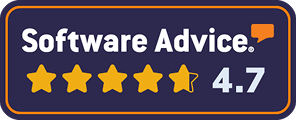Tips and Tricks for Writing a Functional Resume
Generally, there are three types of resume formats, each with its own benefits and drawbacks. There is no one-size-fits-all template, but the resume-verse does have something for everyone. In order to avoid the resume blackhole, you need a layout that helps you stand out.
That might sound strange, but many professions prioritize a seasoned expert with cultivated skills. One just needs to know how to use a functional resume to catch the eye of potential employers. Here at Qureos, we plan to teach you exactly that.
{{quick-link-3="/sandbox/home-v3"}}
1. What Is a Functional Resume?
The functional resume is also known as a skill-based resume. That is because it focuses on marketing the applicant’s skills rather than work experience. It is the ideal format for those who have curated a highly diverse and effective skill set, which would be greatly productive in any job setting.
Compared to the chronological or combination resume, this format is targeted towards a set group of employers who require a refined skill set rather than a history of professional work experiences. This resume showcases your ambitions relevant to the job, rather than what you have already accomplished.
2. What Is the Functional Resume Structure?
Let us guide you on how to make an impressive resume. To help you visualize it, this is what the standard functional resume should look like:

1. Contact Information
Your information should include your full name, city and country, telephone or mobile number, and email address. It can also have links to any professional websites or portfolios, like LinkedIn, Behance, or your personal e-portfolio.
This is a necessary step because many employers will use your information to get back to you. Make sure to add this in your header, with your name in a larger font.
2. Resume Summary
Though a solid cover letter executes this role in detail, a resume summary or objective is necessary to highlight your capabilities as a candidate. A brief yet straightforward passage must explain how you are the perfect fit for this role. If you lack work experience, a resume objective works better on a skills-based CV. Remember to be professional, keeping it relevant to the role you have applied for.
3. Skills Section
Here, you can experiment with that displays your skills in the most attractive, strong way.
Usually, functional resumes start off with the first skills sections, called ‘summary of qualifications’, ‘relevant skills’, ‘technical skills’, and more. In bullet point format, list down all skills relevant to your job description. To further diversify your resume and intrigue your employer, you can mention self-taught skills on your resume as well!
Remember to give examples of where, when, or how you’ve implemented said skills.
4. Professional Skills
Here, you are required to hone in on the important skills that are most likely to secure your acceptance. In a bulleted list, highlight two or three crucial skills that the employer will not be able to turn away. Then, detail when, where, and how you implemented said skills and what you achieved.
Additionally, to further strengthen your resume, mention metrics, statistics, or any number that validates your accomplishments. Data evidence will give credibility to your skills, which is necessary.
5. Work Experience, If Any
In case you have any work experience, a functional resume has the space to include that. Below are your skills, like your professional history in reverse-chronological order. Start from the latest position held and describe your roles, skills, and achievements during that period.
On the other hand, if you don’t have any experience – that’s fine! A functional resume is specifically designed to market your skills over everything else.
6. Education
Lastly, write your educational background. Your college and degree are the most important to mention. It's not important to mention your GPA unless it is specifically asked for. Also, you can add any certifications, honors, or important medals you have received. However, ensure they are all appropriate for the job you have applied for.
After curating your resume, it’s best to run it through a resume score calculator. This will further strengthen your profile and give you an added level of reassurance.
3. Who Should Use a Functional Resume?
For some, functional resumes can be a holy grail. It is vital to create a killer portfolio that guarantees acceptance, so it’s best to see if the functional resume meets your requirements before creating one.
Of course, this resume is perfect for those job positions that value skills over practical experience. The format allows for your most valuable skills to shine up upfront, allowing potential employers to screen that section immediately.
Secondly, if you’re someone who has frequently switched careers, has worked in various departments, or lacks a career niche, the functional resume helps you stand out. For those with an unstructured career trajectory, this format encourages them to highlight their learning and skill development.
Thirdly, the functional resume is a highly useful format for fresh graduates or students who do not have work experience or are currently in school. Don’t fret, as one’s education and college experience are sources of skill-building that is of value to hiring managers.
Additionally, the uniqueness of the functional resume intrigues employers. Therefore, this format is excellent for those who have employment gaps. Aside from focusing on your talents and capabilities, it adds another level to your application.
Lastly, if you’re aiming for a drastic career shift into a different field, this format is for you. You can showcase how your pre-existing skills are flexible and generalizable to every environment. The functional resume can present you as an adaptable and multi-talented individual who can fit into any field!
However, in some cases, the functional resume may not be the right fit. Firstly, if you do have work experience that spans three to ten years and is relevant to the job. Or, if you want to display a steady career trajectory with advancements. In such a case, draft a combination resume or chronological resume.
4. Functional Resume VS Chronological Resume?
A noticeable difference is that of formatting. A functional resume begins with your contact details, followed by a detailed outline of your capabilities, and any certifications. Lastly, it ends with relevant job experiences and educational background.
Whereas the chronological resume starts off with identification details, followed by a resume summary, and a list of your work history. The latter is featured in reverse-chronological order. Unlike the functional resume, this format displays your education, certifications, and skills very briefly, at the end.
Secondly, while some may reject functional resumes for being disjointed or incomplete, some hiring managers prefer candidates who can work in any industry. While, chronological resumes are generally preferred, especially for job positions that require specific expertise and experience.
Lastly, the functional resume enhances your skills as it does not prioritize what you have or have not done. It is future-focused that portrays you as a flexible candidate with holistic skills, able to succeed in any field, despite minimum work experience.
However, a chronological resume values your work history, using it to craft a story that is appealing to employers. It focuses on showcasing accomplishments and your evolution as an employee.
5. Functional Resume VS Combination Resume?
While we’ve mentioned the functional resume’s format, a combination resume is structured differently. It opens with contact information, a resume summary or objective, a bulleted skills list, and a chronological work experience section, ending with educational background. Unlike the functional resume, it bequeaths equal importance to skills and professional history, suitable for mid-level experienced employees.
While a functional resume is received as an unexpected and non-traditional application, combination resumes are more creative and diverse. Though, this varies from employer to employer.
Finally, while a functional resume is focused on emphasizing your skills, a combination resume bequeaths equal importance to skills and professional history, suitable for mid-level experienced employees.
Conclusion
This comprehensive guide on functional resumes is enough to kickstart you on your journey of designing an eye-catching resume. There are several brilliant resume templates available online – so don’t wait and land your dream job today!






.webp)






